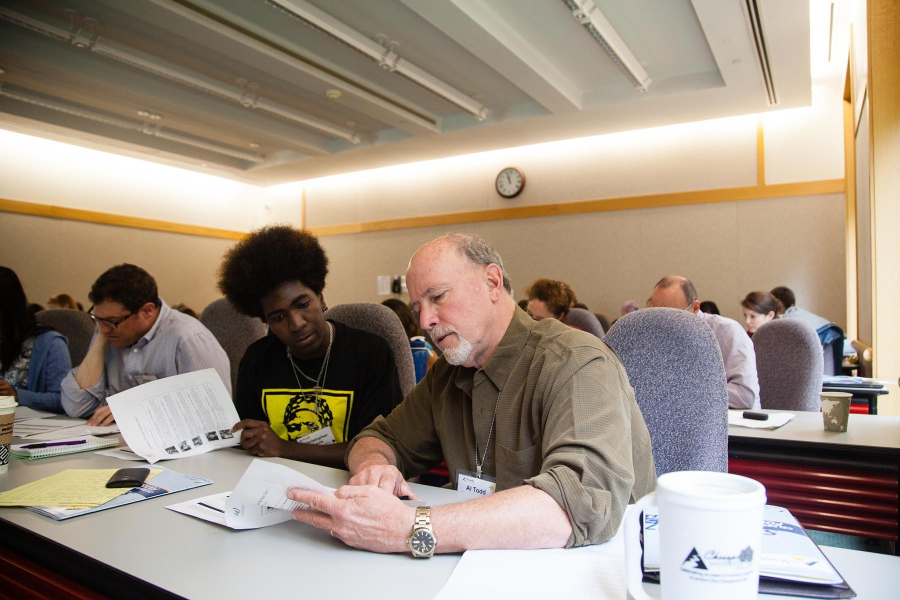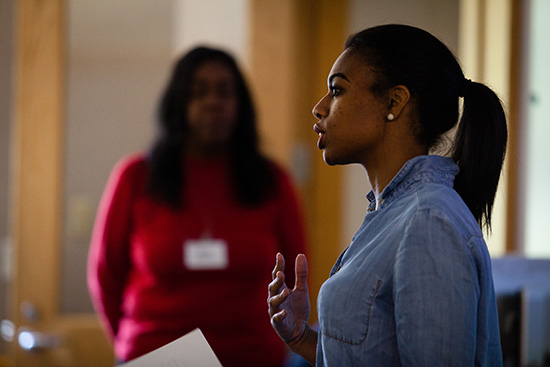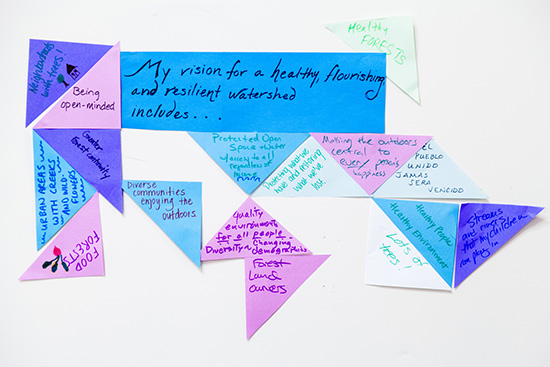Connecting diverse communities and groups helps strengthen our collective watershed work
Focus on diversity at Watershed Forum inspired conversation and collaboration

For ten years, individuals and groups from around the Chesapeake Bay region have been invited to connect with and learn from one another at the annual Chesapeake Watershed Forum, hosted by the Alliance for the Chesapeake Bay. This year’s Forum, held in Shepherdstown, West Virginia, focused on highlighting ten years of progress and sharing strategies to get new results for the Chesapeake Bay and its communities. The Forum was also organized in a way that allowed for new voices of the Chesapeake to be heard and new relationships to form.
At the registration desk, the Forum’s focus on diversity jumpstarted with the collection of attendees’ demographics to establish a baseline of data from which we can measure progress. The results have been tallied; however, the Alliance is awaiting the final attendance count to determine a true baseline of Forum demographics. Moreover, many attendees were overheard expressing positive reactions to the diversity of attendees, such as “This is the most diverse conference I’ve been to in the region,” and “This is the first time I’ve been in at a conference like this where I see more than two people that look like me.” At future events, we hope to explore including the survey in the registration form to hear from even more participants.
Two plenary presentations were given by Audrey and Frank Peterman, founders of the Diverse Environmental Leaders Speaker Bureau. Audrey’s presentation focused on perceptions versus realities. Traditionally, she explained, people have perceived non-white groups as not being active in environmentalism. She then showed us the reality: people from numerous ethnic, age and gender backgrounds are contributing to the narrative. Audrey stressed the importance of not making assumptions about levels of participation, but instead seeking out and elevating the stories and contributions of people of color and other backgrounds. Later, Frank’s presentation hit on the practice of inclusion from a personal and organizational level. “Diversity must be a line item in your budget, and it must be purposeful,” he emphasized. He also highlighted the four elements of community engagement: Mission, Message, Messenger and Method. The message we try to get across shouldn’t be too broad—it should be layered, and include everyone needed for success.

Diversity was interwoven throughout the Forum, and people felt it as they made personal connections and shared ideas with one another. First-time Forum attendees were vocal about how much they enjoyed the conference. Attendees and presenters in the “Bridging the Chesapeake Bay Partnership Gap” session expressed their interest in building upon the Forum through future collaboration. The session, inspired by Diversity Action Team stakeholders, brought forth new ideas and actions to consider for the implementation of our Diversity strategy. A common theme was the need for an interactive network where groups and organizations can share ideas and lessons learned, as well as connect with people throughout the watershed. Attendees expressed interest in a “bureau of Bay-related diversity consultants,” and hope that watershed organizations will submit workforce diversity data to GuideStar, a nonprofit reporting site, for a more accurate baseline of diverse engagement and employment.
The final activity of the Forum was a Privilege Walk, intended to provide participants with an opportunity to better understand personal, community and societal privilege and the role that privilege plays in our collaborative work towards healthy and flourishing watershed communities. Forty-five people attended the Walk, with an opportunity afterwards to reflect on the activity as a group. Overall, the Walk was well received. Many participants shared that while reflecting on their privilege or lack thereof was difficult or uncomfortable, it gave them an opportunity to bond with the Forum community. People continued to talk about the Walk and how it affected them long after it ended, while waiting in line for dinner and in other common areas. A video recording of the Walk and participants’ reflections will be made available in the near future.

People attend conferences to learn and share stories and ideas, but they also want to make personal connections that they can build upon afterwards. The atmosphere of the Forum was welcoming, inclusive and diverse—an opportunity for genuine relationship-building that could yield meaningful results for our communities and our Bay.
To learn more about diversity and the Chesapeake Bay Program, you can read our new Diversity Management Strategy and review and provide comments on our draft Diversity Workplan.
Written by Jim Edward, Deputy Director of the Chesapeake Bay Program, and Shanita Brown, Diversity Communications and Outreach Assistant at the Chesapeake Bay Program
Note: The opinions expressed above are those of the author and do not necessarily reflect U.S. EPA policy endorsement or action.

Comments
There are no comments.
Thank you!
Your comment has been received. Before it can be published, the comment will be reviewed by our team to ensure it adheres with our rules of engagement.
Back to recent stories